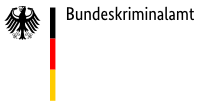The terms "motorcycle group/outlaw motorcycle gang crime" are defined as follows:
A motorcycle group is an association of several persons that is characterised by a strict hierarchical structure, close personal relationships among the group members, very limited willingness to co-operate with the police as well as self-made strict rules and regulations. By wearing the same clothes or insignia, the group members demonstrate their shared identity to the outside world.
Outlaw motorcycle gang crime includes all offences committed by individual or several members of a motorcycle group that are to be seen – as regards behavioural motivation – in direct connection with the membership of this group and solidarity. Outlaw motorcycle gang crime is defined by the motivation for the offences committed that is directly linked to the motorcycle group. For a classification, a consideration of the crime scenario substantiated by criminological experience is sufficient.
Outlaw motorcycle gangs
Outlaw motorcycle gangs (OMCG) are police-relevant gangs. In Germany, this primarily includes the Hells Angels Motorcycle Club (HAMC), the Bandidos MC (BMC), the Outlaws MC (OMC) and the Gremium MC (GMC) as well as their supporter clubs.
Historical facts
The OMCGs were created in the mid-20th century from a group of former members of the U.S. Air Force, the "Pissed Off Bastards of Bloomington", who later changed their name into Hells Angels MC and were an example for all groups created afterwards.
Structures and organisation
The structures of the different gangs are nearly identical. They are hierarchically structured and have strict rules providing for sometimes drastic penalties if rules are violated. The smallest organisational unit is the local association. The BMC, OMC and GMC call this a "chapter", whereas the HAMC calls it a "charter" (hereafter referred to as: chapter). In Germany, the chapter name mostly refers to a region or city where the gang is based. The chapters are more or less independent in their region but have strong national and international relationships within the overall organisation.
Activities
The actually legal (association) structures and the international network of outlaw motorcycle gangs hold considerable potential for being used criminally. Power and territorial interests are asserted against competing gangs with a high degree of criminal energy. However, outlaw motorcycle gangs are also active in specific legal business areas such as the security industry, in the red-light scene and with tattoo shops.
Links to organised crime
In Germany, more and more investigations into outlaw motorcycle gangs and their members reveal that criminal outlaw motorcycle gangs also co-operate with other organised crime groups. The focus here is on the field of violent crime and violations of the Narcotic Drugs Act (BtMG) and the Weapons Act (WaffG).
Offences
Most of the offences committed by members of outlaw motorcycle gangs are offences involving brutality (dangerous bodily injury, actual bodily harm, extortion resembling robbery, extortion, threats). The background of these offences are often traditional enmities between the gangs.
The threshold for the use of sometimes massive violence and the commission of homicide offences is low. The gangs also do not stop at using thrust weapons and firearms, accepting that uninvolved third persons might be injured. In the course of conflicts between two gangs, violence can escalate quickly and may result in intentional killings.
Unreported and unrecorded crime
It has to be assumed that the number of unreported and unrecorded offences in the field of outlaw motorcycle gang crime is fairly high. The code of conduct of outlaw motorcycle gangs prohibits forms of behaviour supporting investigations, especially co-operation with investigating authorities. As the members of outlaw motorcycle gangs lack the willingness to make a statement and witnesses are being intimidated and threatened, offences committed by outlaw motorcycle gangs only become partly known to law enforcement/prosecution authorities.
